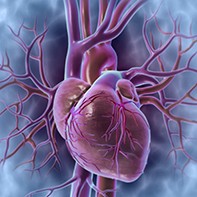Peer Reviewed
Feature Article Cardiovascular medicine
Atrial flutter: the organised cousin of atrial fibrillation
Abstract
Atrial flutter shares many characteristics with atrial fibrillation, but it is important to distinguish between these arrhythmias because of the varying underlying electrophysiology and response to therapy.
Key Points
- Although electrophysiologically different from atrial fibrillation (AF), atrial flutter (AFL) shares many characteristics, especially in terms of its pharmacological medical management.
- AFL can be classified as ‘typical’ or ‘atypical’ based on its anatomical and electrophysiological characteristics.
- Treatment of AFL focuses on identifying and treating reversible causes, controlling the ventricular rate and/or achieving sinus rhythm as well as reducing the risk of systemic embolisation.
- Radiofrequency ablation is generally regarded as a first-line therapy for typical flutter.
Picture credit: © Science Source/Gary Carlson/Diomedia.com
Purchase the PDF version of this article
Already a subscriber? Login here.

